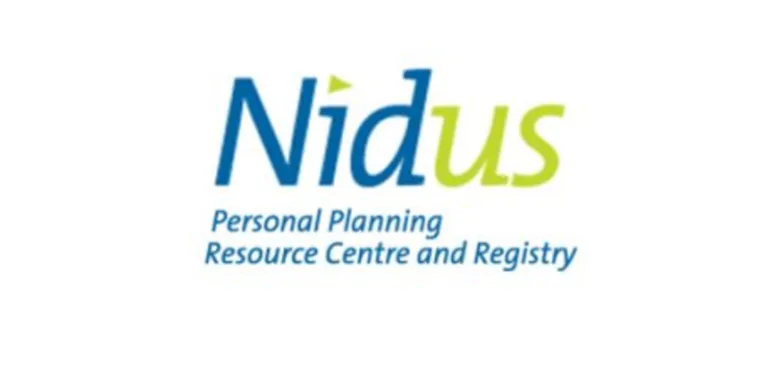
Do I have to prepare an advance directive?
In BC, you have the option to write down your instructions for future health care treatment in an advance directive. An advance directive can substitute for your direct consent or refusal of treatment. Before putting pen to paper, learn how an advance directive can be used and who should consider preparing one.
What you should know
An advance directive gives you the opportunity to record instructions for accepting or refusing specific health care treatments. It’s meant to “stand in” for you in the future — at a time you need health care but aren’t capable of providing consent.
Under the law in BC, a health care provider:
may follow an instruction in an advance directive giving consent to specific health care, and
must follow an instruction that refuses specific health care.
There are some exceptions, explained shortly.
Who is considered a health care provider
A health care provider includes doctors, nurses and all other regulated health care professionals in BC.
An advance directive covers health care
An advance directive applies to future health care only. It doesn’t cover personal care or your financial affairs.
There are certain types of health care you cannot consent to in an advance directive. This includes, for example, experimental health care where the likely risk outweighs the expected benefits.
An advance directive can’t consent to medical assistance in dying
Not surprisingly, you can’t instruct anyone to do anything illegal. Under the law, medical assistance in dying can only be provided to someone who can give consent at the time. So, consent to medical assistance in dying can’t be given in advance through an advance directive.
“I was born with a gene that gives me a coin-flip’s chance of getting Huntington’s Disease. It’s a horrible, incurable affliction, and if I get it I frankly don’t want to suffer like my mom did. After consulting with both my family doctor and a lawyer, I’ve signed an advance directive saying: if I test positive for Huntington’s, I want certain things to happen — and not happen — in my end-of-life care.
– Rory, Phillips Arm, BC

Advance directives can:
give you control over critical health decisions,
open lines of communication, and
relieve family stress.
But they’re not appropriate for all situations. If an advance directive isn’t clear, specific and relevant to the medical situation at hand, it may be ineffective when needed most. For this reason, advance directives are best used when someone:
has a specific diagnosis,
is at end-of-life, or
is trying to get ahead of a condition they are genetically predisposed to and have seen someone close to them suffer from.
In all of the above cases, a doctor would be able to explain the specific medical treatments or interventions likely to be offered to you. In this way, you can make truly informed decisions.
If you're reasonably healthy
If you’re reasonably healthy, an advance directive might not be a suitable plan. There are alternatives. You can appoint a representative under a representation agreement. Our coverage of enhanced representation agreements has step-by-step instructions to guide you through the process.
The law in BC says you can make an advance directive if you’re:
at least 19 years of age, and
capable of understanding the nature and consequences of the proposed advance directive.
This means you can’t make an advance directive if you can’t understand:
The scope and effect of the health care instructions in it. For example, if you are consenting to CPR, can you appreciate the potential risks of an attempted revival?
That your health care providers will not ask a temporary substitute decision-maker to make medical decisions for you if they can look to the advance directive for consent or refusal of the proposed treatment.
Temporary substitute decision-maker
A temporary substitute decision-maker is someone who’s chosen to make a health care decision from you, if you’re incapable of making the decision yourself, and you haven’t put any other authority in place. Learn more about who can be asked to be a temporary substitute decision-maker, and what they can be asked to do.
“My brother Moe has an advance directive. In it, he said if his Parkinson’s got so bad that he needed feeding tubes, he didn’t want them. But when he got pneumonia, his doctor asked his friend Pete if they could insert a feeding tube. Pete said yes. The doctor said Moe’s advance directive wasn’t relevant in this situation — his instructions specifically talked about treating his Parkinson’s, not related afflictions. I complained to the hospital but they said, legally, it was the doctor’s call to make.”
– Eszter, Pender Island, BC

The general rule of medical consent is that a health care provider can only treat you if you give informed consent to treatment. You must be mentally capable of giving, refusing or withdrawing consent. If you’re incapable of giving or refusing consent to health care, your health care provider may seek consent to treatment from your advance directive. They must honour the advance directive where it refuses consent.
There are some exceptions. Legally, your health care provider can’t follow your advance directive if they reasonably believe:
Your instructions are so unclear that they can’t be understood or applied.
Your instructions don’t address the specific treatment decision to be made (that is, they’re not relevant).
Your known wishes, values, or beliefs in relation to the health care decision have since changed. The change must have happened while you were capable.
There have since been significant medical advances that might substantially benefit you (in relation to the specific treatment). You can expressly state in your advance directive that your instructions apply regardless of any changes in medical knowledge, practice, or technology.
The above exceptions are open to the judgment of your health care provider — not your family.
If you have an advance directive, it’s a good idea to think about preparing a representation agreement as well. An advance directive is a piece of paper. It contains “pre-made” decisions. It can’t advocate for you, give context to health care providers or be responsive to changing situations. These are things that a well-informed representative who knows your medical history, as well as your values and wishes, can do. Our coverage of preparing an enhanced representation agreement explains what your representative can do and how to prepare this type of agreement.
Which document takes priority
If you have both documents, which authority takes priority? The law in BC says that, by default, the representative under the representation agreement has the “final say” — the representation agreement takes priority over the advance directive.
How does this work in practice? Your representative can’t just ignore the instructions in the advance directive. They have a legal duty to follow a specific decision-making framework. When making a health care decision for you, your representative must, in this order:
Consult with you to determine your current wishes. And comply with your wishes, if it’s reasonable to do so.
Comply with instructions or wishes you expressed while capable. The instructions in your advance directive are to be treated as wishes you expressed while capable.
If your wishes are not known, act based on your known beliefs and values.
If your beliefs, values and wishes are not known, act in your best interests.
You can give your advance directive priority
You have the option of giving your advance directive priority over your representative. You can do this by saying in your representation agreement that a health care provider can follow the instructions in your advance directive without speaking with your representative. If this is what you want, it’s a good idea to make it clear in your advance directive as well.
“Grandpa has an advance directive. His speech is a little slurred these days, but he’s still capable, for sure. When I visit, he always remembers to ask me about the little things that are going on in my life. We joke around a lot. I’ve seen medical staff treat him dismissively before. I worry that they’ll use his advance directive as a licence to bypass his consent or refusal to treatment. They should be asking him directly — he still knows what he does and doesn’t want."
– Desmond, Cloverdale, BC

Your advance directive can’t override decisions you make while you’re capable of giving or refusing consent. It can only be used when you’re not capable of making a decision at the time you need treatment.
What if you change your mind? The law in BC says you can change or revoke (that is, cancel) your advance directive. You must be capable of understanding the nature and consequences of the change or revocation.
You can revoke your advance directive by simply destroying it with the intention of revoking it. But it’s probably a better idea to put in writing that you intend to revoke the advance directive. You can write this in a new advance directive, or in a separate document.
Prepare your advance directive
Learning about your medical condition and options serves two purposes:
It allows you to give informed consent.
It helps you to write clear, specific, and relevant instructions.
In BC, a health care provider can treat you only if you give informed consent to treatment. This means your doctor or health care provider must explain your illness or condition to you. They must tell you about the proposed treatment, its risks and benefits, and alternative options.
Legally, an advance directive substitutes for your direct consent or refusal to treatment. Often, it covers “end-of-life” care. So it may be a matter of life and death — literally. Treat it with that significance. Get informed. Before writing your instructions, speak to your doctor and learn about the particular treatments that might be offered to you. Learn about the risks, benefits and alternatives.
What form should I use?
There’s no required form for an advance directive. At a minimum, the law in BC says your advance directive must be in writing, witnessed, signed and dated. It must also include the following acknowledgements in order to be legally binding:
a health care provider may not provide you health care that you’ve refused in the advance directive, and
a person may not be chosen to make decisions on your behalf for any health care you’ve written instructions on.
The Ministry of Health provides a sample advance directive form in their planning guide My Voice: Expressing My Wishes for Future Health Care Treatment. See pages 50 and 51 of the English version of the guide. You don’t have to use this form, but it gives you a high-level idea of how to write an advance directive.
If you decide to go to a lawyer or notary public, find out how much they’ll charge. Phone around and compare prices. See the options for free or low-cost legal help.
The most effective approach
An advance directive is a legal document that’s used in a health care context. What does this mean for you? You want to make sure you’ve got it right on both ends. There’s no point in having a legally sound document that your health care provider can’t practically use when it’s needed. The most effective advance directive is one that’s made in consultation with both your health care provider(s) and a legal professional.
Your advance directive should be clear, specific and relevant
Unless your instructions are clear, specific and relevant to the medical situation at hand, your doctor may not be able to follow them when the time comes.
Health care providers will have a hard time confidently acting on an advance directive that contains blanket directions like “I don’t want surgery.” As well, vague statements that require a value judgment will make an advance directive difficult to use. For example, the phrase “quality of life” will mean different things to different people.
On the other end of the spectrum, the document might identify a “shopping list” of possibilities, most of which the patient is unlikely to face. This will also make it difficult for your health care provider to follow your instructions.
It’s a hard balance to strike! Identify the doctor or health care team that will likely be attending to you if your health takes a turn for the worse. Tell them about your wishes and goals of care. Ask them what instructions would be most helpful.
Anticipating various scenarios
If you receive a specific diagnosis, there may still be many unknowns. The instructions in your advance directive should encompass any uncertainties.
You must sign and date the advance directive. The signing must be witnessed by two witnesses. The witnesses must also sign and date the agreement in front of you. You only need one witness if the witness is a notary public or a lawyer.
A person can’t act as your witnesses if they:
Are under 19 years of age.
Are paid to provide you with personal care, health care, or financial services (such as your doctor or paid care providers). A spouse, child, parent, employee or agent of any such person also can’t act.
Don’t understand the type of communication you use, unless they receive interpretive assistance.
What if you’re physically unable to sign the document? In these circumstances, someone can sign it on your behalf. You must tell them to sign the advance directive and be present when it’s signed. A witness can’t sign on your behalf. And anyone who can’t be a witness can’t sign on your behalf, either.
This is a critical step that’s easy to miss. Your health care provider can only follow your instructions if they know your advance directive exists! So give your doctor and other health care providers a copy of it.
You’ll also want to let close family and friends know about your advance directive. They might be asked to contribute to decisions about your health care. If you have a representative, tell them, too. Make sure both of you understand the circumstances when you want the advance directive to be used.
You can also choose to register your advance directive with the Nidus Personal Planning Registry. This online service is a secure registry for storing personal planning documents. When you register a planning document, you can permit access to institutions and individuals you trust.
Common questions
There are some situations where your health care provider won’t be able to follow your advance directive. For example, they may find your instructions unclear or irrelevant to the health care treatment they’re proposing. If so, they’ll need to act as if you didn’t have an advance directive. If you don’t have a representative under a representation agreement, this usually means seeking out a temporary substitute decision-maker to make medical decisions on your behalf.
To learn more, visit our page on temporary substitute decision-makers. This page also explains the hierarchy of authority that your health care provider must follow when seeking consent to making health care treatment.
A MOST form (standing for medical order for scope of treatment) is a document used in hospitals, residential care and community care settings. It should be used to facilitate a conversation with your doctor about your values and wishes for care in the context of what's medically appropriate for you. You may encounter a MOST when you’re chronically ill or near end-of-life, and major health care decisions are looming.
The main differences between an advance directive and a MOST are:
MOST forms should be signed by a doctor. The patient shouldn't handle them. Advance directives must be signed by you (the patient).
Legally, MOST forms do not substitute for consent. They should be used as a guide only. Even if you have a MOST, except in the case of emergency, a health care provider must still ask you directly for consent, or seek consent from someone else if you’re not able to give or refuse it yourself. On the other hand, under the law, the written instructions in your advance directives can substitute for your consent, when you’re not able to give it directly.
There is no law in BC that governs the creation and use of MOST forms. On the other hand, there are laws that make advance directives legally binding documents.
See our coverage of MOST forms to learn more about your legal rights, and how MOST forms should ideally be used.
A friend, family member or anyone else can ask the court to rule that the advance directive is void. This means it would have no legal effect. A concerned loved one may do this if they feel that you were pressured into making or changing your advance directive, or otherwise subject to abuse or neglect.
Who can help

Alzheimer Society of BC
Support for British Columbians with Alzheimer’s disease and other dementias.

Nidus Personal Planning Resource Centre & Registry
Detailed information on personal planning, including template forms.

